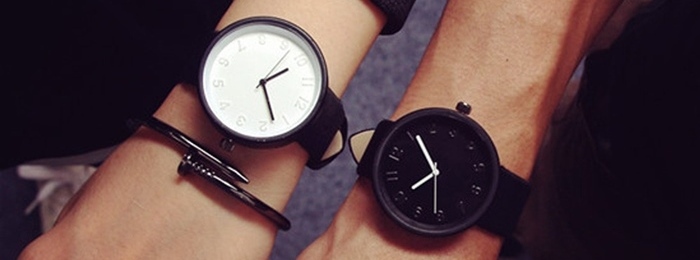A Practical and Convenient
Fashion Statement and Status Symbol

Believe it or not, many years ago wristwatches were considered as a purely decorative trinket for ladies. Men continued to hold on to their pocket watches years and years after women took to wearing delicate bracelets that could tell time.
There are historians who purport to be able to pinpoint when, where, for whom and (sometimes) by whom the first wristwatch was made. The only problem is that different historians have put forward different scenarios...
Some hold that the first wristwatch was made in 1868 for Countess Koscowicz of Hungary by the Swiss watch manufacturer Patek Philippe. Others say that it can be proven beyond any doubt that the first watch was made in 1812 for the Queen of Naples by Abraham-Louis Breguet, a Swiss watch maker who had set shop in Paris. But then, a bracelet with a watch made in 1806 by the Parisian jeweller Nitot was presented as a gift to a minor European royalty upon her marriage in 1809. There is also a mention of “a watch to be fixed to a bracelet” in an account book of Jaquet-Droz and Leschot of Geneva, dated 1790! Yet another source puts the birthday of the wristwatch even further back in history, claiming that Queen Elizabeth I of England received what was at the time described as an arm watch from Robert Dudley in 1571.
In any case, these first ladies’ timekeeping devices were intended more for decoration than anything as practical as punctuality.
Things are a little simpler when it comes to men’s wristwatches... or not.

Everybody agrees men’s wristwatches were borne out of the exigencies of military life and the turmoil and destruction of war. It is easy to see the connection between military affairs and men’s wristwatches. After all, flipping out a pocket watch can interfere with war effort.
However, it is a bit more difficult to establish the precise moment when men took to wearing watches on bands around their wrists, just like ladies.
Some say that the first men’s wristwatches produced in large quantities were manufactured specifically for the German military in the 1880s by Swiss watchmaker Girard-Perregaux. In 1902, an Omega advertisement showed a British artillery officer wearing a wristwatch; the watch was described as “an indispensable item of military equipment”. Wilsdorf & Davis, which later adopted the trade name Rolex, began experimenting with men’s wristwatches in 1905. Cartier’s iconic Tank watch was created in 1917 by the company’s founder, Louis Cartier.
All in all, by the end of World War I in 1918, men’s timepieces definitely migrated from pockets to wrists.
Watch styles have changed and technologies have evolved. Some of the pioneers of the industry are still around and going strong. And thanks to the globalisation of the marketplace and the spread of quality technology, many designers and watch makers that have appeared in recent years, creating an abundance of high-quality timepieces in a wide variety of prices and styles. From tactical military watches to the finest luxury yachting watch, any style is available if you're just willing to look for it.
And even though we can now check the time by pressing a button on a smartphone, it looks like timepieces worn on the arm are here to stay. Why? Well, because flipping out the smartphone to check the time is so reminiscent of flipping out a pocket watch... and we all know that simply will not do! Besides being practical and convenient, wristwatches have become for men what they were for women centuries ago: a fashion statement, a status symbol, and an ornament.
With that said, get your wristwatch now! Time is ticking.